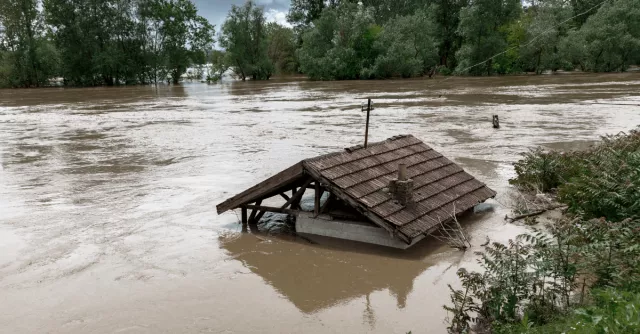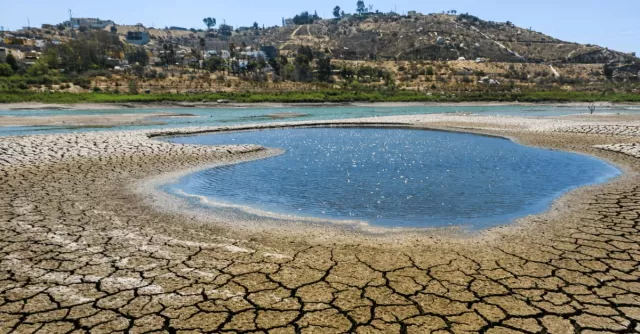FEMA’s COVID-19 Pandemic Operational Guidance: Key Takeaways

According to the National Oceanic and Atmospheric Administration (NOAA), the 2021 Atlantic hurricane season will likely be above average. Specifically, there is a 60% chance of an above-normal season this year - and therefore a high chance that your business continuity will be interrupted.
But, because of the pandemic, it may be even more disastrous than experts initially thought.
This means that organizations like the Federal Emergency Management Agency (FEMA) are working to create a revised set of rules for crisis management. Pandemic operational guidance must factor in for extreme weather.
We've organized these regulations so that your business can prepare similarly. Ahead of this year's hurricane season, you should be sure that you know what to do in the case of a natural disaster.
Applying FEMA's Coordination Plans to the Workplace
If you live in an area prone to natural disasters, you should know that FEMA has a plan to assist. And, from their plan, your workplace can make its own.
You can still work and expand your company's needs during this time. Neither the pandemic nor the hurricane season should slow you down.
If a natural disaster like a hurricane strikes, FEMA will deploy a Federal Coordinating Officer (FCO). These are the captains of coordination between regional administrators who ensure that each area is getting the help it needs based on the level of incident management required.
Your business can employ a similar technique. If you find a problem area with your business, you need an appointed leader who will show up if there's a problem and determine how to continue business operations.
Workforce Protections in Crisis Management
In the COVID-19 work environment, FEMA is careful about its deployments. While the organization needs most of its staff to deploy to the area of incidence in person, they have been allowing consultants to assist virtually.
Your business should also adopt a virtual policy.
Perhaps positive rates in your area are high, so you'd feel more comfortable with employees working from home. Then, you could conduct meetings over video chat and keep everyone safe until the CDC deems that it's safe to return to the workplace without regulations.
Since FEMA worked on incident management for COVID-19, its workforce has become better equipped to handle these kinds of situations, and they plan on evolving their practices even more.
Here are some of the workforce protections and other changes that FEMA has put in place:
- On-site testing and screenings at FEMA facilities
- Overall health and wellness screenings
- Virtual registration
You can adapt these changes to your workforce. For example, you may want to consider offering health and wellness screenings for all your employees if there are some coming into the office to reduce the spread of infection and keep everyone safe.
Protecting Employees During Emergency Planning
FEMA is continuing to protect its employees, even as vaccines become available across the country. However, it’s important to think about those individuals who have not gotten their vaccine yet.
Here are some of the things that FEMA is doing to protect its employees:
- Making vaccines available to FEMA employees
- Encouraging employees to get vaccinated
- Offering on-site testing for employees
- Conducting contact tracing
- Providing masks and other personal protective equipment
- Enforcing protective guidance for staff and visitors
- Encouraging physical distancing through facility modifications, better ventilation, and thorough cleaning
- Encouraging employees to remove themselves from unsafe situations
You may want to follow a similar mindset with your business organization and offer information about the vaccine, encourage employees to consider it, and even offer paid time off to receive and recover from the vaccine.
When it comes to the facilities that your employees are working in, you may want to consider these changes:
- Engineering improvements for better ventilation and air quality
- Reasonable accommodations for employees with disabilities, especially immunocompromised individuals
- Not allowing employees who have recently tested positive to come into your facility
These strategies can protect you, your employees, and your employees' families.
Remote Pandemic Operational Guidance
As FEMA has been moving some of its employees to work virtually, it's also been working with the public on crisis management concerning the pandemic. This means that they've been working on educating the public about COVID-19 and what steps they need to take to protect themselves.
Here are some of the initiatives that FEMA has been conducting virtually for citizens and employees:
- Increasing communication efforts with the public
- Engaging with citizens via social media
- Hosting virtual townhalls
- Coordinating messages with FEMA employees
- Increasing the availability of FEMA personnel
- Allowing FEMA personnel to have more control over the kind of deployment they have
- Using virtual centers to support areas impacted by natural disasters
As an authority in your industry, your business could do something similar and take to social media to teach your target audience about the pandemic and how to keep themselves safe. As a part of this, you could explain how you're keeping your own employees safe during this time.
Emergency Planning
Usually, FEMA provides mass shelter assistance in case of an emergency. But, with the pandemic, these plans have had to change.
With these new changes, FEMA is focused on keeping citizens safe. FEMA can continue with mass shelters on a smaller scale by keeping families together and creating distance between different family units.
Although they may not house as many citizens, they're still crucial to emergency planning and disaster assistance.
As they're implementing these rules and regulations, FEMA is also sure to promote consistency across the bases. Virtual check-ins with intelligence officials keep every base accountable for ensuring the safety of citizens and employees alike.
Here are some more considerations that FEMA is making:
- Planning for protective measures for all care personnel
- Health screening
- Mask use
- Social distancing requirements
- Consistent cleaning and disinfectant use
- Creating quarantine/isolation areas
- Planning for additional supplies that areas may need
- Developing strategies for protecting individuals from COVID-19
- Addressing health screening assumptions for individuals with COVID-19 symptoms without a positive test
- Tracking individuals entering and exiting the facility
- Continuing health monitoring as individuals leave and return to the facility
- Planning for feeding strategies
Accounting for all these changes is essential as the pandemic has changed the face of natural disaster crisis management. Whether it be a hurricane or something else, FEMA cannot back down on virus regulations. Otherwise, the crises would be made worse by the spread of COVID-19.
Therefore, you need to be serious about COVID-19 regulations in the workplace, especially ahead of hurricane season. Having ill employees isn't going to make emergency situations any better. And, if your shelter is a small area, this could exacerbate the problem.
Preliminary Damage Assessments
Another advantage to virtual staff implementation is preliminary assessments. While FEMA is sending staff to an area, they can virtually conduct a preliminary damage assessment. This means that they'll have an idea of what their team needs before they even get there.
This can help reduce the number of times that FEMA staff may run out of supplies.
Your workplace can follow this example as well. By keeping an eye on the weather ahead of each week and day, you can assess whether your employees are at-risk during that time.
With the pandemic still raging, you should also check the positive testing rates in your area at that time. It may help to have a specific percentage as a benchmark. This number can be the determining factor as to whether employees come in that week or not.
This is a refined preliminary damage assessment for your workplace. And, by taking five minutes to check the weather and COVID-19 rates for that week, you're going to protect a lot of people.
As you're guiding your workplace through these strange times, you should be sure to make these plans transparent with your staff. Tell them that you're looking for specific markers to make decisions and let them know that you're doing all of this for their safety.
These times are tough, but enacting crisis management is a must.
Acting on Pandemic Operational Guidance
All in all, FEMA (and the rest of us) have learned a lot from the past year. This period proved that we weren't prepared for a pandemic, but we learned and adapted quickly. FEMA has shown growth in its pandemic operational guidance just as we're sure you've shown growth in other areas.
FEMA has implemented more and more virtual solutions that will drive success in disaster-related situations. And, with their guidance, your business can follow similar guidelines.
If you're worried about protecting your business during this time of COVID-19, hurricanes, and more, you need business continuity experts. Agility can help in a variety of ways, including with our emergency notification system.




